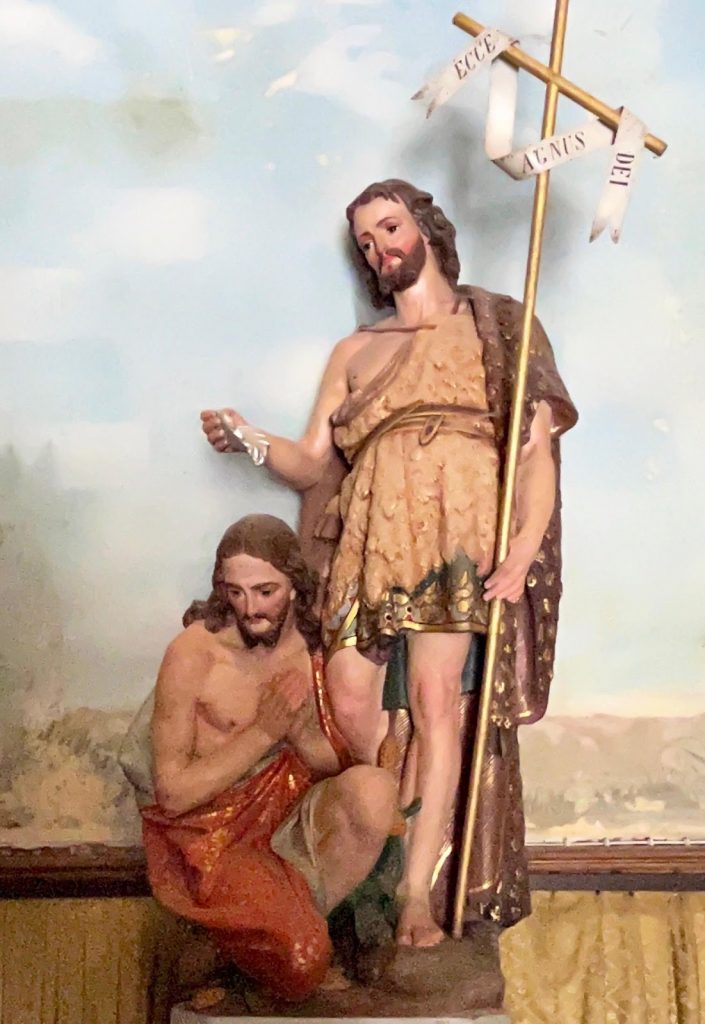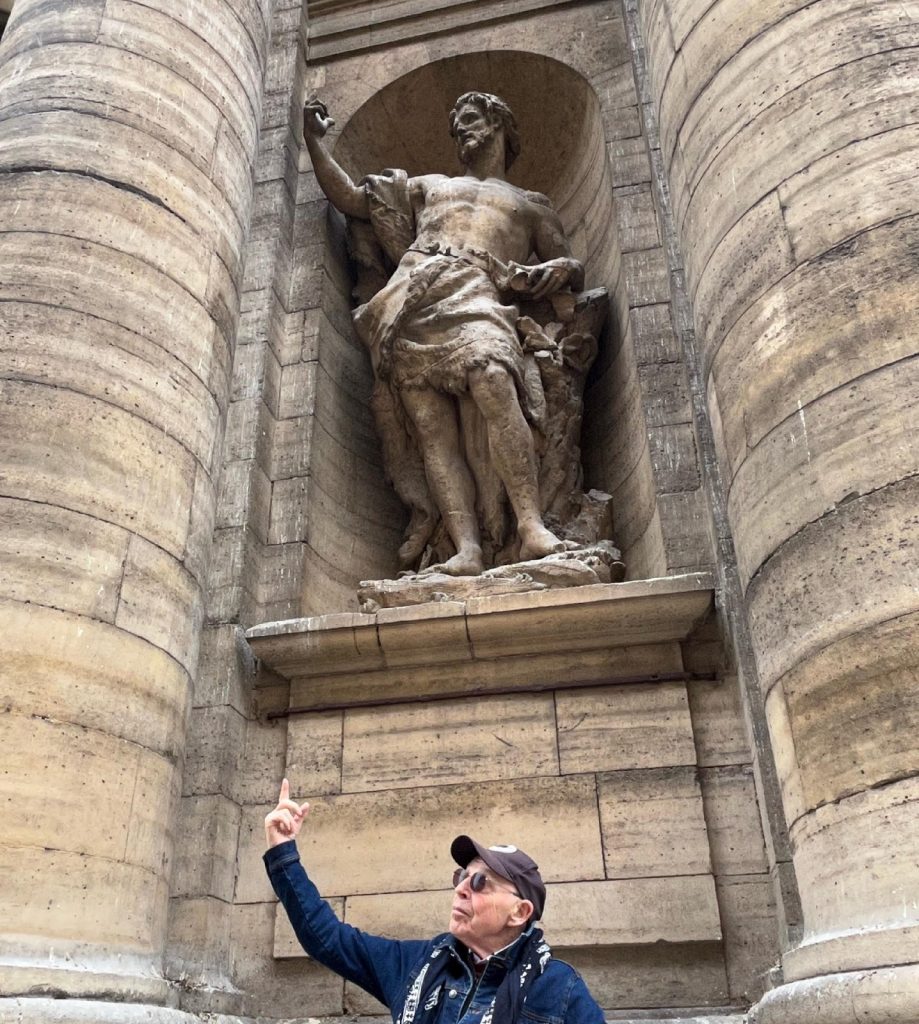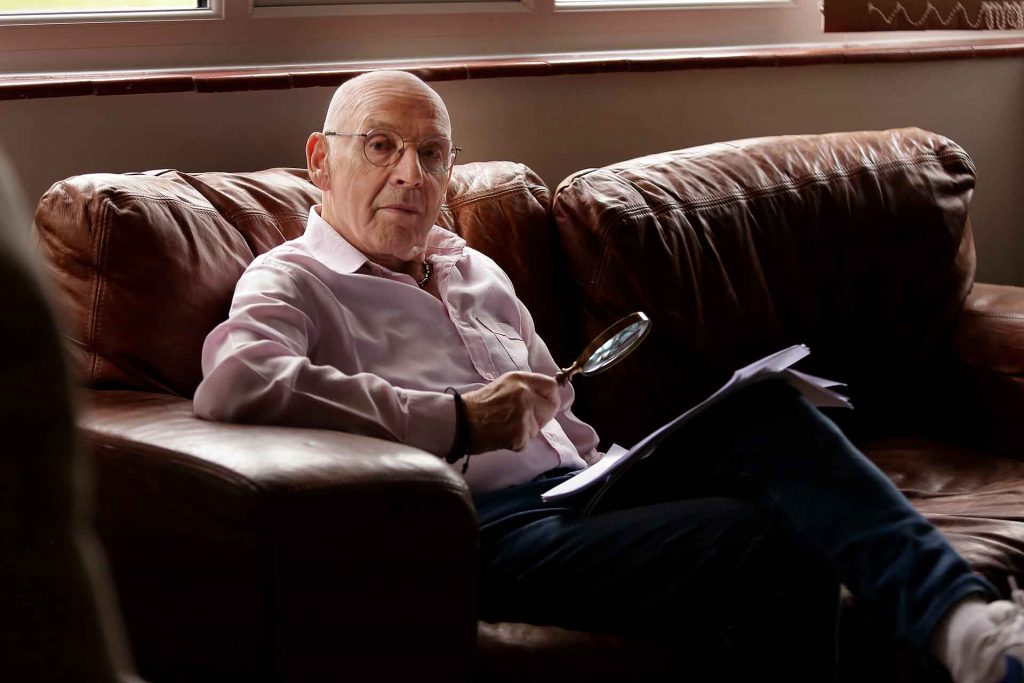This, would you believe, is a painting by Leonardo of John the Baptist. If you were not told, there is no way you would think it was John with that weird, knowing smile. Do you believe what the National Gallery says about the finger?

‘The finger pointing to heaven alludes to Christ’s future destiny.’
Surely not! With that knowing grin, he is supposed to be thinking of Jesus’ death and resurrection? Come on, this clearly has absolutely nothing to do with Christ’s passion. Leonardo is clearly trying to tell us something. Remember, some experts have claimed that Leonardo was a Rosicrucian or at least had what they call Rosicrucian beliefs.
Let me tell you about a collection of documents, deposited anonymously in the Bibliothèque Nationale in Paris during the 1960s as they may contain a clue. They have rather odd but accurate information about French history concerning the Church at Rennes-le-Château and certain underground organisations, including the Templars. All were written under pseudonyms or attributed to people later found to be dead and who had nothing to do with them. One of the authors was finally discovered to be Philippe de Chéresey and was said by him to be a sort of surrealist joke to create a supposedly ancient organisation called the Priory of Sion. This Priory of Sion, in fact, was not ancient, as it was first registered in 1956. So now the whole event is taken as a hoax. The problem is that some of the information is so obscure yet so accurate that it would take years of research to discover – just for a joke?
I am not saying Philippe de Chéresey’s dossiers were not a hoax; I am saying that he had a source of information not available to the academic world, and he used it to give credence to his ‘so-called’ joke. The dossiers list an unbelievable, or should I say ridiculous, list of Grand Masters from a splinter group of the Templars. I cannot tell you if it is real, but I cannot quite believe anyone could write a list of 26 people, which starts in 1188 and goes to recent times, which links known and little-known people whose interconnections actually are not obvious, without a great deal of research. It would be a massive undertaking just for a gag.
It is said the people in the list were not called Grand Masters but Nautonniers, which is French for Navigators. So here is the extraordinary, or perhaps unbelievable, list of Nautonniers.
Jean de Gisors (1188–1220)
Marie de Saint-Clair (1220–1266)-
Guillaume de Gisors (1266–1307)
Edouard de Bar (1307–1336)
Jeanne de Bar (1336–1351)
Jean de Saint-Clair (1351–1366)
Blanche d’Évreux (1366–1398)
Nicolas Flamel (1398–1418)
René d’Anjou (1418–1480)
Iolande de Bar (1480–1483)
Sandro Botticelli (1483–1510)
Leonardo da Vinci (1510–1519)
Connétable de Bourbon (1519–1527)
Ferrante I Gonzaga (1527–1575)
Ludovico Gonzaga (1575–1595)
Robert Fludd (1595–1637)
J. Valentin Andrea (1637–1654)
Robert Boyle (1654–1691)
Isaac Newton (1691–1727)
Charles Radclyffe (1727–1746)
Charles de Lorraine (1746–1780)
Maximilian de Lorraine (1780–1801)
Charles Nodier (1801–1844)
Victor Hugo (1844–1885)
Claude Debussy (1885–1918)
Jean Cocteau (1918–1963)
In 1629, Robert Denyau, curé of Gisors, composed a history of the Gisors family, the ‘Histoire polytique de Gisors et du pays de Vulcain’. This manuscript, now in the Bibliothèque de Rouen, states that the Rose-Croix was founded by the first on the list, Jean de Gisors. So this suggests the list is a list of members of l’Ordre de la Rose-Croix Veritas not the Priory of Sion.
Anyway, true or fake, these chiefs all take on the name John and a number (John XXI followed by John XXII). But what is interesting is that the first, Jean de Gisors, is John II. The writers of “Holy Blood, Holy Grail”, who first published the list, were unsure which historical John was John I, but they suspected it was John the Baptist. Can we now be certain that John I, was in fact John the Baptist, which explains the raised index finger in the paintings, telling us who exactly was number one? You are not sure? Then look again at the painting. The right-hand index finger indicates one, but look who his other hand is pointing at. His left hand points to himself! There can be no doubt that the Baptist is telling us, “I am number one.”
If you find this all hard to believe, then I would look at the Burlington Cartoon of John and Jesus – and search for the finger.

Is that John’s mother raising the finger? If these two were the only fingers we might be able to dismiss it, but there is another.
In Leonardo’s ‘Last Supper’, there is a detail nobody talks about. One of the disciples is thrusting the finger into Jesus’ face. It is framed against black, so it is clearly meant to stand out. There is nothing in the Gospels that can explain this gesture, as if you look at Peter on the left, he is asking the beloved disciple (not a woman) to ask Jesus who is going to betray him.

Given that the same finger is in the two previous paintings, is this disciple confirming, “You are not number one; someone else is!”?
You may wonder why I am so sure the beloved disciple is a man and not, as Dan Brown’s Da Vinci Code believes, a woman, namely Mary Magdalene. If it was, then that would leave only eleven disciples, and anyway, Fra Angelico painted a Last Supper with Mary and Martha in it, as well as twelve disciples with no great secrecy. And anyway the Bible clearly states the Beloved Disciple is a man:
‘When Jesus saw his mother there, and the disciple whom he loved standing nearby, he said to her, “Woman, here is your son”. (John 19:25)
How Leonardo portrayed this young man probably has more to do with him being gay as much as anything else. For instance this drawing of his assistant was thought to be pinned up in his studio.

Anyway back to our finger, if you still have doubts, here are images of John the Baptist from the two heretical French Churches. First from The Magdalene church at Rennes-le-Chateau where Jesus is shown very deferential to the Baptist.

And from St Sulpice, the church at the centre of heresies in Paris, where several interesting inside features have been talked about, but nobody mentions that outside to the right is a massive picture of number one with of course his finger raised.

© Julian Doyle IOW 2025. Author of ‘Leonardo Da Vinci’s Penultimate Supper.’
Any part can be reproduced so long as proper credit is given to the author

